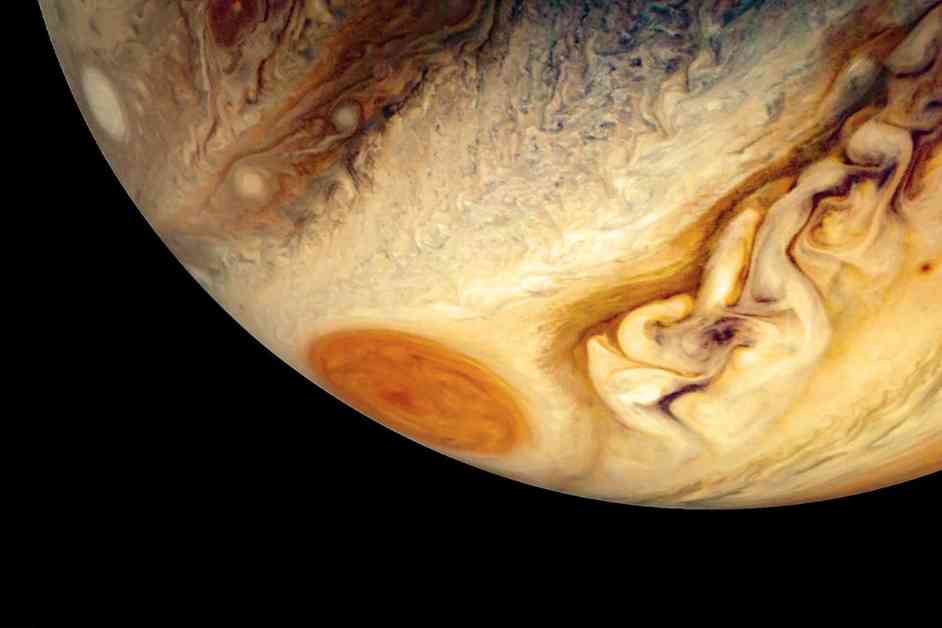In the vast solar system, Jupiter’s Great Red Spot is a standout feature. This red oval can be seen clearly through small telescopes, resembling a menacing eye on the giant gas planet. The Great Red Spot is so colossal that it could fit the entire Earth inside it without touching the sides. This long-standing feature of Jupiter has puzzled scientists for centuries, but recent research published in Geophysical Research Letters suggests that its age may not be as ancient as previously believed.
Jupiter’s Great Red Spot is an anticyclonic vortex, a massive storm system with gases swirling counterclockwise at speeds of 450 kilometers per hour. This storm, the largest in the solar system, consists of two regions: a reddish oval at its core and a surrounding white band of gas known as the Hollow. The Great Red Spot resides in Jupiter’s South Equatorial Belt, one of the many bands that give the planet its striped appearance due to latitudinal wind patterns and convective currents within the atmosphere.
The origins of the Great Red Spot date back to 1665 when Italian astronomer Giovanni Cassini first observed a dark oval on Jupiter. Although the spot disappeared after 1713, it reappeared in 1831 and has been continuously observed ever since, undergoing changes in size and shape over the years. Recent studies have used numerical models to simulate the behavior of Jupiter’s atmosphere and have proposed that the Great Red Spot may have formed in 1831 as a result of a south tropical disturbance, a phenomenon where gases from one band flow into another, creating a swirling storm system.
Despite the ongoing changes in the Great Red Spot, its future remains uncertain. The storm has been shrinking since the 2010s, raising questions about its longevity. While it is unclear if the Great Red Spot will eventually fade away, the dynamic nature of Jupiter suggests that another storm system may emerge in its place. So, even if the Great Red Spot disappears, Jupiter’s turbulent atmosphere guarantees that new wonders will continue to arise in the future.






